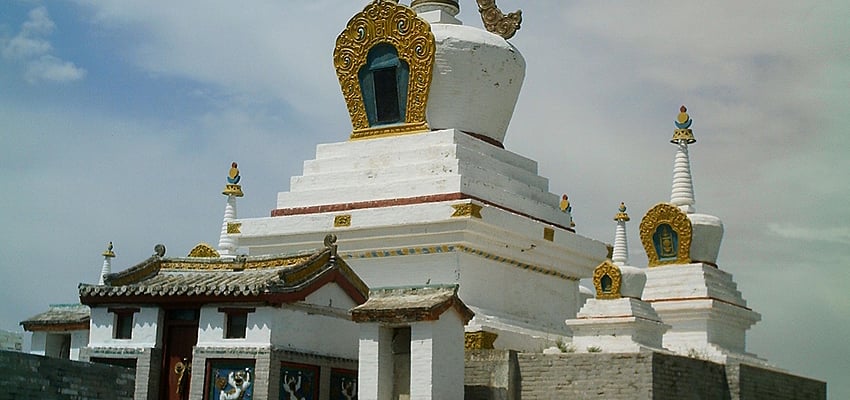


Mongolia is a Buddhist country that follows Tibetan tradition. Over the centuries, practices changed and evolved leaving the country with some fascinating belief systems and religions. Blending respect for the gods with spiritual communication, beliefs are expressed through ritual ceremonies as well as the order of daily life.
Over the centuries, Shamanism and Buddhism played revolving roles. The former originated in the region around Lake Baïkal in Russia and has been practised since time immemorial. In 1269, Lamaism appeared and overtook Shamanism. But a century later, upon the decline of the Yuan Dynasty in 1369, Shamanism resurfaced.
In 1563, under the influence of Tibet's spiritual capital at Lhassa, Mongolia converted to Tibetan Buddism. Even so, Shamanism, far from disappearing, remained anchored in the belief system, the two religions co-existing and blending certain aspects. For example, a number of Shamanic spirits appear in the Buddhist pantheon. Indeed, it was important that Buddhism co-exist alongside Shamanism, in order for it to become ingrained in people's spiritual lives. This co-existence can be seen in certain rituals, such as the construction of ovoos , which are stone cairns of varying height that you'll often cross during a trip to Mongolia. Ovoos were constructed to honour the spirits, and were in existence long before Buddhism arrived; the decorative prayer flags were later added by Buddhist priests.

During the 19th Century, Mongolia became home to a large number of important temples and monasteries, their presence encouraging the population to adopt a more sedentary lifestyle.
These two belief systems lived in relative harmony, until the arrival of the Communists, who brutally overturned popular belief and people's spritual practices. Religious sites were razed to the ground and the Lama priests driven out, imprisoned or massacred. Buddhism was banned for a number of years.
With the fall of the USSR, old beliefs, rather than having been eradicated, began to re-emerge. In 1994, a law on religious freedom was passed, allowing different beliefs to be openly practised and places of worship to be built. Numerous temples that were damaged during the Soviet era were restored and banned ceremonies were brought back to life - the tsam, a masked dance that portrays the battle between good and evil, being one such example. Furthermore, you'll find the temple architecture intruiging during a holiday in Mongolia, as they often blend both Tibetan and Chinese elements. Some monasteries, including Gandan, Mongolia's spritual capital, fuse vibrant Chinese colours with simple and sober Tibetan tones.

Even if it does not really qualify as a religion, being without a set doctrine or school of thought, Shamanism is an integral part of Mongolia. A Shaman will take on the role because he/she was either born with the necessary gifts or comes from a shamanic lineage. He/she is able to fall into a trance in order to communicate with the spirits. Once out of a trance, they're able to answer questions posed. As a result, the shamanic trance is an impressive yet dangerous undertaking.
Shamanism is the representation of a world that is inhabited by living beings, animal spirits and the souls of those who have passed away. Shamanism fuses these elements. Spirits, rather than being immaterial, inhabit all objects in the universe. And in turn the universe needs to honour these spirits, which is achieved in ritual form. Therefore, even if no official training exists, certain codes and traditions infiltrate daily, ritual life - the organisation of yurts, for example, which represent a vision of the world.
Shamanism, unlike other religions, humanises rather than deifies spirits. The relationship between spirits and the forces of nature is seen as intertwined. So to have, for example, a prosperous year and successful hunting season, the spirits need to be offered gifts such as food or tobacco.
